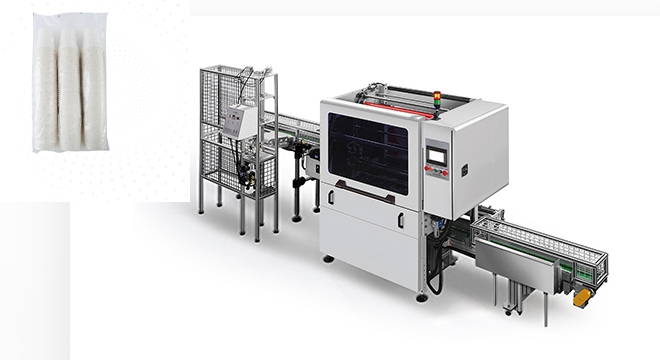In the modern paper cup manufacturing industry, the paper cup packing machine plays a crucial role in ensuring that the final products are properly packaged and ready for distribution. Understanding its working process is essential for both manufacturers and those interested in the field.

1. Initial Cup Feeding
The first step in the process is the feeding of the paper cups into the machine. The cups are usually placed in a hopper or a conveyor belt that leads them to the main packing area. This step requires a steady and controlled supply of cups to ensure a continuous operation. For example, the hopper may have a sensor that detects when the cup level is low and alerts the operator to refill it.
Q: What if the cup feeding is not consistent?
A: If the cup feeding is inconsistent, it can lead to disruptions in the packing process. The machine may stop or produce packages with incorrect numbers of cups. Operators need to regularly check the cup supply and ensure that the feeding mechanism is working properly. They can also adjust the settings of the feeder to optimize the cup flow.
2. Cup Alignment and Arrangement
Once the cups enter the packing area, they need to be aligned and arranged in a specific pattern. This is typically done using mechanical guides and pushers. The cups are moved and positioned so that they are in the correct orientation for packing. For instance, they may be arranged in a row or a stack, depending on the desired packaging format.
Q: How accurate is the cup alignment?
A: Modern paper cup packing machines are designed to have a high level of accuracy in cup alignment. The mechanical components are precisely engineered to ensure that the cups are placed within a very small tolerance. This accuracy is crucial as it affects the overall appearance and stability of the packaged product.
3. Packaging Material Loading
The next step involves loading the packaging material, such as plastic film or paper wrap. The packaging material is usually supplied in a roll and is fed into the machine. It passes through various rollers and tensioning systems to ensure a smooth and even supply. The machine then cuts the packaging material to the appropriate size for wrapping the cups.
Q: Can different types of packaging materials be used?
A: Yes, many paper cup packing machines are designed to be versatile and can work with different types of packaging materials. However, the machine may need to be adjusted slightly depending on the thickness, flexibility, and other properties of the material. Operators can usually change the settings to accommodate different packaging materials.
4. Wrapping and Sealing
The cups are then wrapped with the packaging material. The machine folds and wraps the material around the cups, and then seals it. Sealing can be done using heat, glue, or a combination of both. For example, in heat sealing, the machine applies heat to the edges of the packaging material to melt and bond it together, creating a secure seal.
Q: What is the advantage of using heat sealing over glue sealing?
A: Heat sealing can provide a more hygienic and tamper-evident seal. It also tends to be faster and more consistent than glue sealing. However, glue sealing may be preferred in some cases where the packaging material is not suitable for heat sealing or where a stronger bond is required.
5. Labeling (Optional)
Some paper cup packing machines also have the capability to apply labels to the packaged cups. The labels can contain information such as the brand name, product description, and barcodes. The machine picks up the labels from a label roll and applies them accurately to the packages.
Q: How important is labeling in the paper cup packaging process?
A: Labeling is very important as it provides essential information to the consumers and helps in product identification and traceability. It also serves as a marketing tool, allowing brands to promote their products and attract customers.
6. Final Product Discharge
After the cups are packaged and labeled (if applicable), they are discharged from the machine. They are usually conveyed to a collection area or a further packaging stage, such as being placed in cartons or boxes.
Q: What happens if there is a jam during the discharge process?
A: If a jam occurs during the discharge process, the machine usually has sensors that detect the problem and stop the operation. Operators can then clear the jam and restart the machine. It is important to quickly address any jams to avoid disruptions in the production line.
Summary
The paper cup packing machine follows a series of well-defined steps to efficiently package paper cups. From the initial cup feeding and alignment to the loading of packaging material, wrapping, sealing, optional labeling, and final product discharge, each step is crucial for producing a high-quality packaged product. By understanding the working process and being able to troubleshoot common issues, manufacturers can ensure the smooth operation of the machine and the timely delivery of packaged paper cups to the market.

 Dec 11,2024
Dec 11,2024








